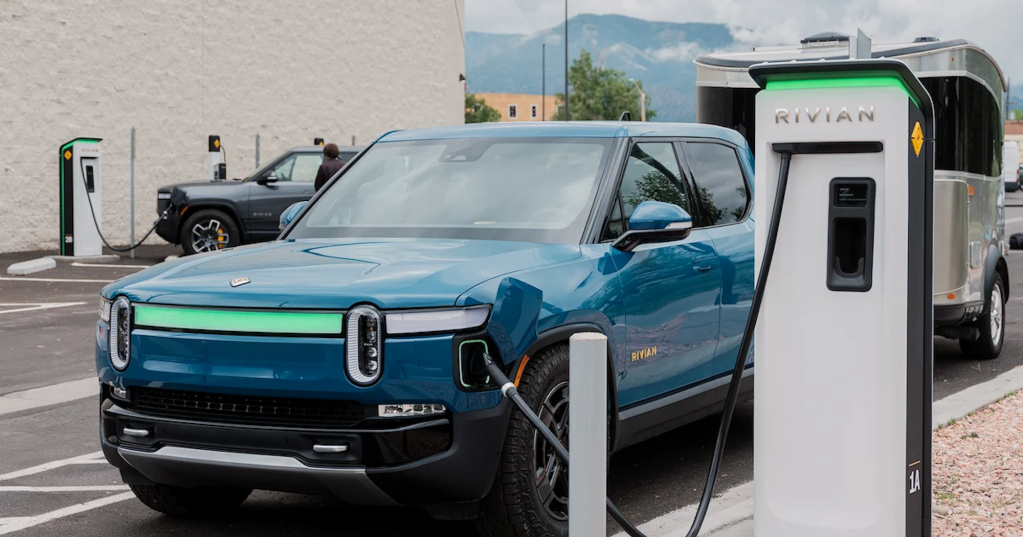Ultra-fast charging isn’t science fiction, it’s here (Tesla watch out). With innovations from CATL – Energy Storage Solution Provider , BYD , and Rivian , the electric mobility landscape is shifting under our feet. Here’s a full breakdown of where things stand, why it matters, and how MWC is ready to support tomorrow’s infrastructure.
Revolution on Four Wheels: Rivian Leads the Way
Rivian is rolling out a major 2025.18 software update bringing real-world capabilities to its growing fleet of R1 models. Highlights include:
- Up to 215 kW DC fast charging for Gen 2 Large Pack models, enabling about a 15% range gain in just 15 minutes
- On-demand battery preconditioning, letting drivers heat or cool the pack ahead of charging to optimize speeds
- A revamped Energy App with detailed “Charging” and “Energy Monitor” tabs that break down consumption (battery, HVAC, accessories) and integrate trip-based charging guidance
- Best-in-class charging intelligence, hinting at potential bidirectional power export used for vehicle-to-grid or vehicle-to-home applications .
These features aren’t gimmicks, they dramatically cut real-world charging times for Rivian drivers. In one 2024 battery preconditioning test, charge power rose from ~20 kW to ~55 kW at a 62.5 kW station after pre-warming undeniably improving speed
What This Means for Infrastructure Planning
- Megawatt Power Needs 215 kW+ charging requires more than standard 240 V hookups. Sites now need 480 V three-phase power, oversized feeders, and robust metering.
- Smart Control Integration Battery preconditioning and energy usage dashboards must be woven into site SCADA or microgrid controllers, optimizing traffic and protecting charger and vehicle battery health.
- Resiliency by Design Fast-charger hubs can incorporate battery buffers or local generation to prevent grid spikes and ensure reliability during peak or stress events.
- Futureproofing for V2X As Rivian and others move toward bidirectional charging, stations need to be future-ready, capable of exporting stored energy back to homes, grids, or devices.
MWC’s Role: Engineering the Next Wave
Mountain West Consulting helps infrastructure evolve from initial concept to commission-ready:
- Grid-Ready Facility Design We size transformers, feeders, switchgear, and buffers so next-gen EV chargers can hit 300 kW+ without causing local instability.
- Control Platform Integration Our team embeds AI-driven dispatch, battery preconditioning triggers, and charger-to-grid coordination into microgrid controllers and SCADA systems.
- Resilience Planning We help create layered energy systems, PV, battery, possible hydrogen generators, and EV chargers, within community microgrid frameworks.
- Strategic Incentive Optimization We identify clean-energy and EV infrastructure rebates, plan early for federal investment tax credits, and navigate utility rate structures for maximum ROI.
Why It Matters Today
- Competition is grounded in speed. Tesla pushed fast charging; Rivian is catching up with a smarter, feature-rich approach.
- Station owners need to think bigger. High-capacity chargers aren’t plug-and-play—they demand finescale engineering.
- Energy infrastructure must stay ahead of demand. Fast charging requires not just more power, but smarter power.
🧭 The Road Ahead
Ultra-fast EV charging is more than a convenience; it’s a catalyst, fueling mass EV adoption, stress-testing the grid, and demanding new engineering models. With capabilities like hydrogen integration, microgrid resiliency, and high-throughput site designs, the future of mobility runs through our infrastructure.
At MWC, we’re already laying the groundwork, designing resilient, scalable, and clean-first charging ecosystems. If you’re building the next EV superstation or upgrading campus charging, let’s talk about how we can engineer tomorrow’s powerhouse today.
📚 Sources
- Rivian Gen 2 Large Pack vehicles now support 215 kW fast charging with battery preconditioning—TechTimes, The EV Report downloads.rivian.com+9theevreport.com+9evhype.com+9rivianforums.com+8techtimes.com+8theevreport.com+8
- Rivian 2025.18 Energy app redesign—app tabs, trip targets, efficiency monitoring—The Verge facebook.com+8theverge.com+8nasdaq.com+8
- Battery preconditioning test increased charging rate from 20 kW to 55 kW nasdaq.com


Recent Comments